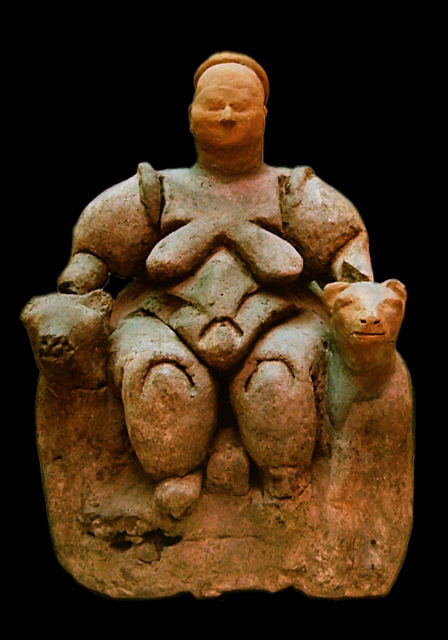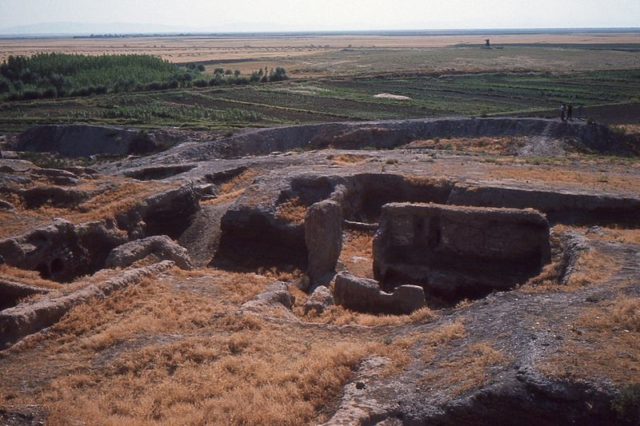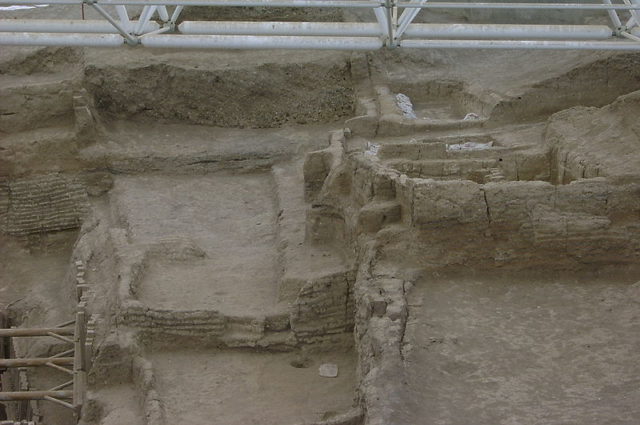Archaeologists have found a rare stone statue of a woman at a digging site in Turkey’s central province of Konya.
The woman had sagging breasts and belly; this was believed to have represented either fertility, the mother goddess, or an older woman who had high status.
A specialist has stated the statue dates back 8,000 years – this is one of only a handful of statuettes of the era ever discovered in one piece.
Catalhoyoyuk is one of the most significant archaeological locations in the world. Established about 7,000 BC, it had been home to 5,000 people that lived in a mud brick and plaster houses.

Their structures were so close together that the inhabitants clambered over the roofs and had to use ladders to get into their homes.
The town dwellers were early farmers who had tamed plants, and had kept wild cattle for milk and meat and they had cattle horns incorporated into the walls of their homes.
The town contained the oldest murals, and had paintings hanging on the walls – unlike towns that came later, there was no obvious hierarchy.
There were no homes for leaders or priests; no temples or public spaces as well.

The deceased had been buried underneath their homes, they had no cemeteries and no one knows what happened to the inhabitants.
They might have been murdered by invaders or driven away by the loss of nearby farmland. By the year 2009, 2,000 statues were found at the location in Catalhoyuk, Turkey.

Created by the Neolithic farmers, thousands of years before the makings of the pyramids or even the Stonehenge, the statues tend to picture curvaceous people, crude sheep, and tiny cattle.
Yet the Professor Ian Hodder from Stanford University had stated that this one is very unique because it is carved form stone, while the others were created from clay.

It is in great condition, and the craftsmanship as well has set it apart – the 17 centimeter (7 inches) statue weighs 1 kilogram (2.2 pounds).
Specialists believe the statues might be representatives of animals the people had been dealing with and they might as well be teaching aides.
Yet unlike others that have been discovered inside of garbage pits, Professor Hodder stated that this statue was discovered underneath a platform along with a piece of dark rock known as obsidian.
He proposes it might have been positioned there as some part of a fertility ritual, Mail Online reported.
In the 1960s, some investigators alleged the more plump figures were of a mysterious big-breasted and large-bellied mother goddess and this prompted a feminist tourism industry that thrives today.
We have another story for you in our archeology files: Crusader-era hand grenade found in Israel
A UNESCO World Heritage location, Catalhoyuk is one of the earliest cities found, and it dates back nearly 9,000 years. Some specialists thought that it was an egalitarian culture.
The town had survived for about 2,000 years.